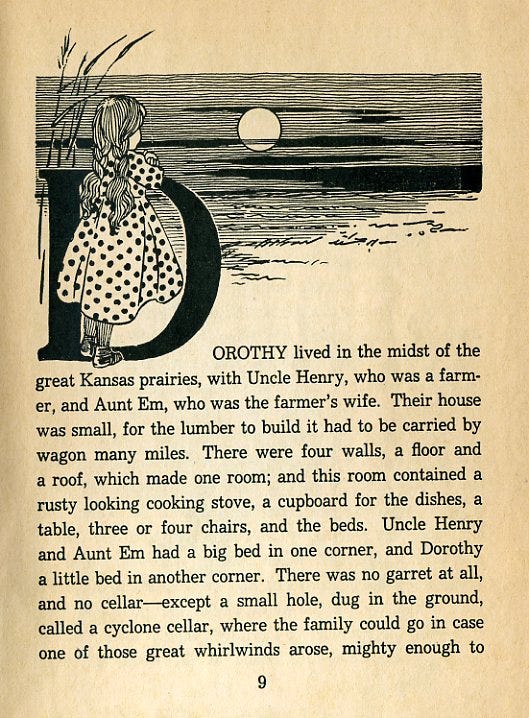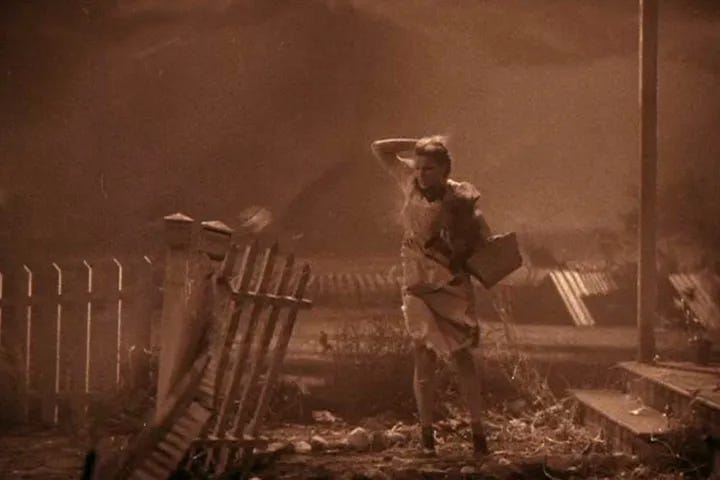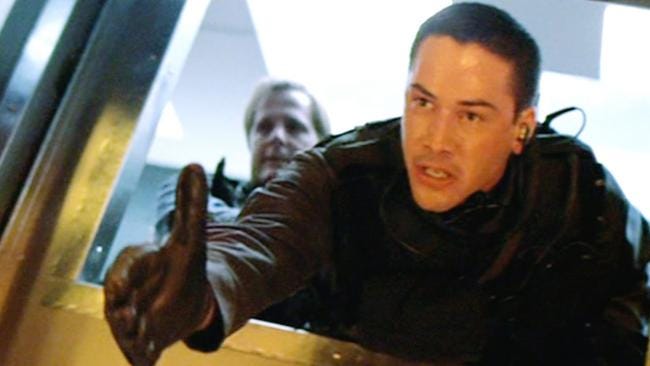“A story has no beginning or end; arbitrarily one chooses that moment of experience from which to look back or from which to look ahead.”
- Graham Greene, The End of the Affair
Thanks, Graham Greene, this is a lovely sentiment, but writers could do better than to start stories arbitrarily. You were trying to screw other writers up, weren’t you? Graham was over there like “Also, stories don’t need characters. Or words, really. Please just phone it in, everyone else but me!”
This is going to be part 1 in a series on openings in fiction (something people were asking for after my series on endings)… And I’m really just going to spend this whole post refuting that quote, which, to be fair, I’ve taken completely out of context.
So… Where do we start a story?
Here’s where I’ll agree with Graham Greene: Stories do not come to the writer custom-packaged with a beginning and an ending. Sometimes it can feel like the beginning is baked in, because the writer’s first idea is the idea for an opening paragraph. Which must be the place the story starts, right?
And indeed, that could absolutely be the thing you sit down and write first. But the first thing you write is rarely the first thing readers need to read.
If your characters were real and lived real lives (or if they are real because you’re writing nonfiction), you would have infinite possible starting points. Not all of them created equal.
Consider the full arc of your story. Most likely*, there’s a major change and/or upheaval at or near the beginning, and a significant change/upheaval/reversal at or near the end. (Hamlet sees the ghost on the parapet. Wow! Things are extremely different now! [A lot of other stuff happens.] Hamlet dies, and so does nearly everyone else. Oof, that is a big change!) (After some preliminary but important stuff about the invitation to the ball, Cinderella gets a Fairy Godmother. Huge change! [Other things occur.] Here comes the prince to save her from her terrible family and they ride off as doves peck out her stepsisters’ eyes. Life is very different now!) Often—the cliché is true—this change has to do with someone setting out on a journey (literal or figurative), or with a stranger coming to town (literally or figuratively). But not always!
If we want to go Full Craft Wonk, we can call those big reversals “peripeteia,” which Aristotle defined in Poetics as "a change by which the action veers round to its opposite, subject always to our rule of probability or necessity.” Or we could just ignore that.
The question, then, is how close to that initial change to start things. Because ideally, the opening pages are showing us two very different things: What normal was, and also how things have changed.
*but no, of course, not always. Stories can be non-narrative, or cyclical, or be about stasis rather than change. Still, in any literary tradition and in any era, you’ll find that 99% of stories start right before something changes.
A Case Study
Let’s consider two versions of the same story: L. Frank Baum’s The Wonderful Wizard of Oz (1900), and the MGM film adaptation The Wizard of Oz (1939).
The book first, of course.
Here’s the opening; I’ve cut some things here, but all this happens within the first two pages:
Dorothy lived in the midst of the great Kansas prairies, with Uncle Henry, who was a farmer, and Aunt Em, who was the farmer's wife. Their house was small, for the lumber to build it had to be carried by wagon many miles. There were four walls, a floor and a roof, which made one room; and this room contained a rusty looking cooking stove, a cupboard for the dishes, a table, three or four chairs, and the beds …
When Dorothy stood in the doorway and looked around, she could see nothing but the great gray prairie on every side…Toto played all day long, and Dorothy played with him, and loved him dearly. To-day, however, they were not playing. Uncle Henry sat upon the door-step and looked anxiously at the sky, which was even grayer than usual. Dorothy stood in the door with Toto in her arms, and looked at the sky too. Aunt Em was washing the dishes…
Suddenly Uncle Henry stood up.
"There's a cyclone coming, Em," he called to his wife; "I'll go look after the stock." Then he ran toward the sheds where the cows and horses were kept.
Aunt Em dropped her work and came to the door. One glance told her of the danger close at hand.
"Quick, Dorothy!" she screamed; "run for the cellar!"
So, within about four minutes of reading, we get to the tornado; very quickly thereafter, we’re in Oz. Meanwhile, Baum does manage to get across how dull and gray Kansas is. We learn in the parts I cut that Henry and Em never laugh. We learn that Dorothy is an orphan, and we learn about Toto (the real hero of the story, tbh). And then, before a nine-year-old can get sick of reading about Kansas, that normalcy is left behind.
In contrast, the movie:
We get twenty minutes (about a fifth of the movie) in black-and-white Kansas before we land in Technicolor Oz.
If we just had twenty minutes of establishing shots of Kansas looking dreary, there’s no way it would work. But do you remember what happens? We start with Dorothy and Toto running down the street, clearly in trouble. She gets home and tells everyone that Mrs. Gulch tried to hurt him. There’s a bunch of farm business, including Dorothy falling into the pig pen and Burt Lahr saving her. Then she sings “Somewhere Over the Rainbow,” then Mrs. Gulch comes riding up on her bike with evil theme music, then she steals Toto, who jumps out of the basket. Then Dorothy and Toto run away and find Professor Marvel, who looks in his crystal ball and tells her to go home. She does, but here comes the twister, and she’s too late to get into the storm cellar. And then absolutely everything changes.
What we have here is a pretty fantastic chain of cause-and-effect, starting with an inciting incident (Toto’s in trouble) and leading all the way to the big change (wowww, we just killed a witch and everyone’s really short and we somehow invented color). We were able to spend so much time in normalcy (aka Kansas) because things were happening, things worth worrying about, events that caused other events.
An inciting incident is something that causes other things to happen but that is not the main, life-altering change that will set the whole story in motion. So Cinderella seeing the invitation to the ball is an inciting incident. But the Fairy Godmother showing up is the major reversal of fortune.
This is a different topic, but I’d also note that in the film version, Dorothy becomes partly responsible for her own fate. If she hadn’t dreamed of a faraway land and run away, none of this would have happened to her. In a moment of peripeteia that Aristotle would have loved, her first major reversal is when she accidentally gets exactly what she wished for.
Both of these openings work equally well.
(Less so the movie ending, which chalks the whole adventure up to a concussion.)
In both cases, we show what was and get to the new normal. Imagine the versions that wouldn’t work: Starting in Oz, so we have no sense of what Dorothy has left behind, or how strange this all is to her. Or spending such a short time in Kansas (two sentences of the book, or one minute of the movie) that it hardly registers. Or spending a long time in Kansas with nothing really important happening, maybe just Dorothy wandering the farm and thinking about chickens. Or spending half the story in Kansas, with interesting but not life-changing farm stuff happening, before we get to Oz.
So:
I’m going to be hugely reductive here, but there are four basic ways a narrative story could start.
An inciting incident leads to the first major change/reversal (Cinderella; the MGM Oz; in The Catcher in the Rye, we see Holden missing the football game and losing the fencing equipment and talking to his roommates (with all sorts of lurking crises) before he leaves school and sets out wandering.)
There’s no real inciting incident; the first thing to really happen is the major change/reversal (the Baum Oz; Ann Patchett’s Bel Canto starts when the lights go out and everyone at the party is taken hostage; in Kafka’s “The Metamorphosis,” Gregor wakes up and finds he’s a giant bug in the very first sentence; in The Hobbit, we start when Bilbo’s Hobbit Hole is invaded by dwarves, and we see his normal life as it’s being messed up, before he sets out on his journey.)
The inciting incident has happened before the story starts, and the first thing we see is the reversal (in Hamlet, the murder and wedding have already happened and the first thing we see is the ghost on the parapet showing up to change Hamlet’s reality forever and set the story in motion)
Or we could start in medias res (in the middle of things) after the first major change and then back up. (Think of the opening of Toni Morrison’s Beloved—“124 was spiteful”—and the path we then retread to learn why. Or Marquez’s One Hundrd Years of Solitude: “Many years later, as he faced the firing squad, Colonel Aureliano Buendia was to remember the distant afternoon when his father took him to discover ice.”) This move can feel quite gimicky, if you aren’t careful. And usually we’re only there in the middle of things for a moment before we zoom all the way back to before the first change occurred.
(And of course there are infinite variations. Think of Get Out, in which we slowly start to sense that things have changed horribly, but we’re not sure what’s actually going on until about halfway into the movie.)
You can play along at home!
The next thing you read or watch, ask yourself:
- What was the first major reversal that completely changed these characters’ world?
- How close to the beginning did it come?
- Was it basically the first thing to happen, or was there an inciting incident that led up to this?
- What would the effect have been if we started later in the timeline? What about earlier?
- How did I come to understand what normal had been, before that change?
You’re going to find variety, not a formula.
Mistakes we can make:
Oh yes oh yes, there are traps.
Walking the reader through a pretty normal day-in-the-life. Just because someone overslept and is now late for work does not make it an interesting day. Taking us on a tour of the town doesn’t work well, either. (In contrast, Taffy Brodeser-Ackner’s new novel Long Island Compromise takes us on a nifty town tour as this guy, having just been kidnapped, is driven through it with a hood over his head. That worked great.) Notably, this is something that works much better on film (because you’ve got montage, and music, and sexy people)… Don’t absorb that to the point that you think it’ll work on the page. It won’t.
Thinking you have to start with a moment that is, itself, an organic beginning—like someone waking up in bed, or a plane touching down, or the first day of school. You can (Kafka did), but most of these openings are overdone (to the point that editors might roll their eyes if your story starts with someone waking up).
Starting the story well after the major change has happened. Imagine if we started the story after Gregor Samsa had already been a bug for a week. And he’s just kind of… wandering around. Not as interesting!
Forgetting to include any real change in the entire story. This is particularly a trap for short stories. If you can’t look at the story and tell us why, out of all the episodes in this person’s life, you’ve chosen this episode, this day or series of events, why should we care? It doesn’t need to be the most important moment of that life, but it should certainly be the time something significantly changed.
Although this is a separate issue from where to start, the biggest issue I see in openings is wording/framing that doesn’t orient the reader. I wrote two whole posts about that, which you can read here.
What’s the game plan?
If you don’t know what your story is about yet, write until you do. If you do know what it’s about (because you’ve finished a draft or because you’ve thought about it a lot), let’s go. Ask yourself:
What is the full arc of the story?
What is the first major reversal, and what is the last major reversal?
Why is this the episode or series of events that you’re choosing to show, out of someone’s whole life?
How close to that first reversal do you want to begin? Are you interested in starting right there, or leading up to it with an inciting incident, or perhaps starting later (in medias res) and backing up to show us that reversal?
How late could this story start and still make sense? How early could it start without boring us? (Related questions, focusing on your protagonist: What is the last moment everything is status quo for your character? How much runway do you need to give them so we see the full arc of their change?)
How are you going to get across what normal was, so we understand how much things have changed? And how are you going to do that without walking us through a boring, static day?
If you start with an inciting incident, how does it lead to the rest of the story through cause-and-effect? How does it cause the first big reversal?
Regarding that inciting incident: Consider the trick of the minor change, the minor crisis, to get us into the action and show some normalcy before the major conflict. (Toto has been kidnapped!) Think of the 1994 movie Speed: there’s a crisis with an elevator, one that gets solved quickly, before there’s a bomb on the bus. And there’s a nice chain of cause-and-effect with the elevator thing leading to the bus thing.
What about envelopes and braids?
Okay, some novels follow multiple, braided threads (say, one story set in 1850, one in 2024, and one on a future moon colony). You need to think hard about the starting point of each of these timelines. You don’t get a free pass on the second and third ones just because the first started in an optimal place.
And some stories/novels/memoirs make wonderful use of an envelope structure (a story within a frame story). A character is, for instance, sitting down to hear a story, and the bulk of the book will be that story. We will almost always return to this envelope narrative at the end. (Wuthering Heights works like this; Ethan Frome is an example of a story imagined by the narrator; A Separate Peace is a story remembered by the narrator.) Remember that this does not simplify things. You need a purpose for the envelope, a reason that you’re not just showing us the past directly, but through this filter. (After all, whatever is told as present day, or as the most recent, gets primacy of place; you’re suggesting that it’s the most important.) In other words, there needs to be a strong arc to the present story, even if it’s just a strong emotional/mental arc. And—as above—you now need to find two solid starting points: one for the envelope, and one for the main narrative.
We aren’t done beginning!
In a future post, I’ll talk about specific starting points, the rate of info revelation, and more. What are your questions about openings? If you’re a paid subscriber, please ask your questions in the comments and I’ll try to get to them next time!








This post is so helpful, thanks! I’ve rewritten the opening of my WIP 17,000 times, trying to find that perfect starting point. What trips me up is striking the right balance between establishing the main character’s life before the big change with enough to get the reader invested, but not so much that they get bored before stuff really happens.
In a dual POV (alternating chapters but in the same time frame), how do you handle the inciting incident? Can one occur early on and the other perhaps not occur until the end of Act I?